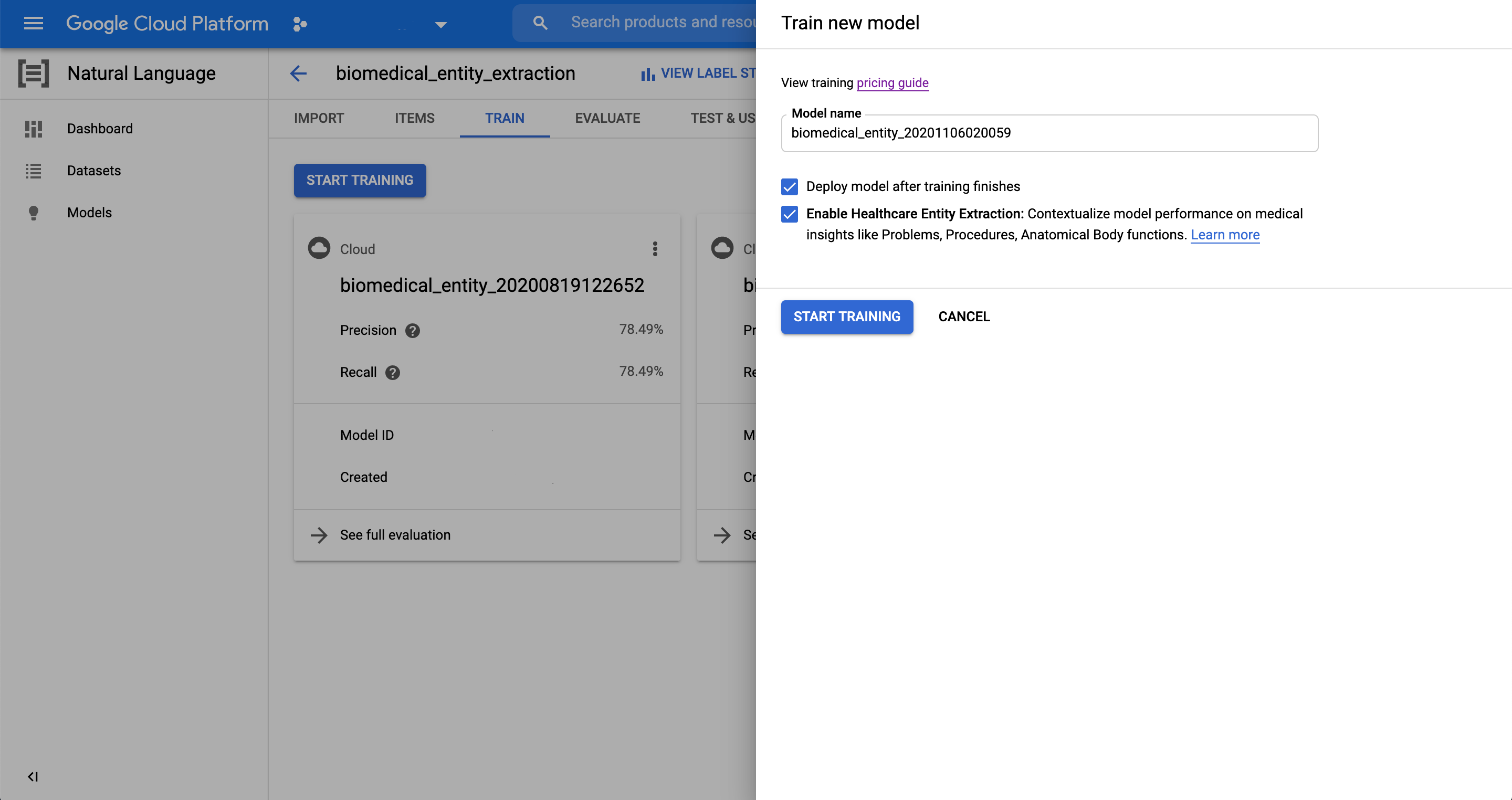 AI
AI
 AI
AI
 AI
AI
Google LLC is trying to lift some of the burden from overworked physicians and doctors with new cloud services launched today that it says can automate the review and programmatic analysis of medical documents.
The aim is to help them increase productivity and prevent the burnout of healthcare workers who are under more pressure than ever before while battling to contain the COVID-19 pandemic. Google Cloud’s new Healthcare Natural Language API uses artificial intelligence to help doctors extract the most pertinent information they need to know about their patients from the stacks of medical records related to each individual.
Andreea Bodnari, a product manager at Google Cloud, said in a blog post that one of the most time-consuming tasks facing healthcare professionals is manually reading their patient’s medical documents. Those documents record their medical history, including any allergies, substance abuse, pre-existing conditions, medications they’re currently taking and so on, and that means they’re required reading.
It’s a problem because reading can take a lot of time. Another issue is that most of this medical information comes in the form of written notes, or unstructured text, which means it lacks any kind of metadata that would allow it to be mapped into a standard database where it could be found more easily.
Google’s answer to this is the Healthcare Natural Language API, which it says has been trained on thousands of medical documents to extract the information doctors need to know. It works by using machine learning to identify clinically relevant attributes based on the surrounding context in medical documents.
So, for example, it can discern details such as which medications have been prescribed to someone in the past from medications that have been prescribed for the future. It also picks up the likelihood of specific symptoms or diagnoses, as captured in language nuances:

“With the Healthcare Natural Language API, enterprise customers can now better coordinate valuable medical insights, such as vaccinations or medications, that are sometimes overlooked as patients move through their healthcare journeys,” Bodnari said. “This solution can drive measurable outcomes by lowering the likelihood of redundant bloodwork or other tests, reducing operational spending, and improving the patient-doctor experience.”
The Healthcare Natural Language API can be used in various situations. For example, physicians in an emergency room can use it to quickly find out details regarding a patient’s history, so they can make the necessary decisions regarding their treatment on the spot.
Alternatively, a telehealth company can use the API to identify symptoms, pre-existing conditions and medications from a doctor-patient conversation. And pharmaceutical companies can use it to optimize clinical trials by increasing the accuracy of test subjects taking into account the various inclusion/exclusion protocol criteria, Google said.
Complementary to the Healthcare Natural Language API is a second service Google launched today, called AutoML Entity Extraction for Healthcare.
Essentially, this is a low-code tool that healthcare professionals with minimal coding skills can use to build their own Healthcare Natural Language models that are customized to extract even more specialized information from medical records. That could help them to better identify more relevant information in medical documents, such as gene mutations and socioeconomic factors.

“AutoML Entity Extraction for Healthcare complements the coverage of insights available through the Healthcare Natural Language API,” Bodnari said. “These tools assist healthcare professionals with the review and analysis of medical documents in a repeatable, scalable way. We hope this technology will help reduce workforce burnout and increase healthcare productivity, both in the back-office and in clinical practice.”
Constellation Research Inc. analyst Holger Mueller told SiliconANGLE that natural language APIs need to be fine-tuned for each domain because each industry has its own specific vocabulary and language, and that’s what Google has done with today’s new offering. Still, he said, the API by itself only provides so much value as businesses need developers to leverage them properly, but developers are currently scarce resources.
“That’s why it’s good to see Google is also adding an AutoML capability for the Healthcare Natural Language API that allows industry professionals to build their own AI-based apps with the help of low code,” Mueller said. “2020 is the year of vertical cloud offerings and Google has put forward some useful assets that can change the way of work in healthcare.”
Support our mission to keep content open and free by engaging with theCUBE community. Join theCUBE’s Alumni Trust Network, where technology leaders connect, share intelligence and create opportunities.
Founded by tech visionaries John Furrier and Dave Vellante, SiliconANGLE Media has built a dynamic ecosystem of industry-leading digital media brands that reach 15+ million elite tech professionals. Our new proprietary theCUBE AI Video Cloud is breaking ground in audience interaction, leveraging theCUBEai.com neural network to help technology companies make data-driven decisions and stay at the forefront of industry conversations.